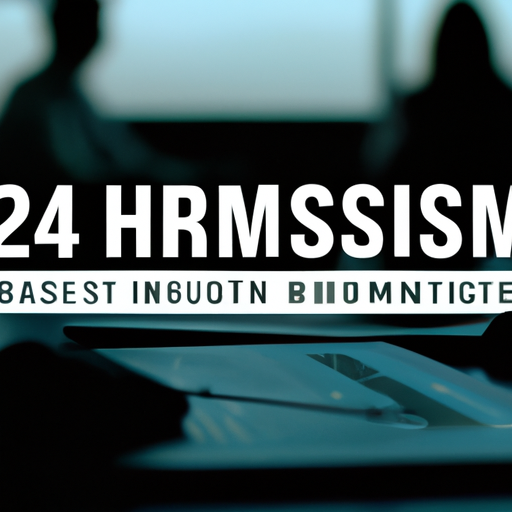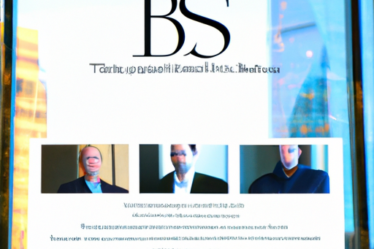
The Impact of Record-setting Demand for H-2B Visas on the Workforce Shortage
The United States is currently experiencing a sustained workforce shortage, with industries such as hospitality, landscaping, and construction struggling to find enough workers to meet their needs. This shortage has led to a record-setting demand for H-2B visas, which allow foreign workers to come to the US temporarily to fill these job vacancies.
The H-2B visa program is designed to help employers who are unable to find American workers to fill their job openings. It allows them to hire foreign workers on a temporary basis, typically for a period of up to nine months. These workers are required to return to their home countries once their visas expire, ensuring that the program does not negatively impact American workers in the long term.
In recent years, the demand for H-2B visas has skyrocketed. In 2021, the Department of Homeland Security received a record-breaking number of applications for these visas, far surpassing the annual cap of 66,000. This surge in demand is a clear indication of the severity of the workforce shortage and the reliance of many industries on foreign labor.
The impact of this record-setting demand for H-2B visas on the workforce shortage cannot be overstated. Without these visas, many businesses would be unable to operate at full capacity, leading to a decline in productivity and economic growth. The H-2B program provides a lifeline for these industries, allowing them to continue operating and contributing to the economy.
However, the increased demand for H-2B visas has also raised concerns about the potential exploitation of foreign workers. Some critics argue that these workers are vulnerable to abuse and exploitation, as they may be afraid to speak out against unfair treatment for fear of losing their jobs and being forced to return to their home countries.
To address these concerns, the Department of Labor has implemented various measures to protect H-2B workers. Employers are required to provide fair wages and working conditions, and they must also demonstrate that they have made efforts to recruit American workers before turning to the H-2B program. Additionally, the Department of Labor conducts audits and investigations to ensure compliance with these regulations.
While the H-2B program has its critics, it is clear that it plays a crucial role in addressing the workforce shortage in the United States. Without these visas, many industries would be unable to find the workers they need to keep their businesses running smoothly. The program provides a temporary solution to the workforce shortage while also protecting the rights of foreign workers.
In conclusion, the record-setting demand for H-2B visas is a direct result of the sustained workforce shortage in the United States. This demand highlights the reliance of many industries on foreign labor and the importance of the H-2B program in addressing this shortage. While there are concerns about the potential exploitation of foreign workers, the program has implemented measures to protect their rights. Overall, the H-2B program is a vital tool in ensuring that businesses can continue to operate and contribute to the economy during this challenging time.
Exploring the Reasons Behind the Surge in H-2B Visa Applications

Record-setting Demand for H-2B Visas Amid Sustained Workforce Shortage
The United States is currently experiencing a sustained workforce shortage across various industries. As a result, there has been a record-setting demand for H-2B visas, which allow employers to hire foreign workers for temporary non-agricultural jobs. In this article, we will explore the reasons behind the surge in H-2B visa applications and shed light on the impact it has on the American economy.
One of the main reasons for the increased demand for H-2B visas is the lack of available American workers to fill these temporary positions. Many industries, such as hospitality, landscaping, and construction, heavily rely on seasonal workers to meet their labor needs. However, with a shrinking domestic workforce, employers are left with no choice but to turn to foreign workers to keep their businesses running smoothly.
Another factor contributing to the surge in H-2B visa applications is the improving economy. As the economy continues to recover from the impact of the COVID-19 pandemic, businesses are experiencing a surge in demand. This increased demand puts additional pressure on employers to find workers quickly, leading them to seek foreign labor through the H-2B visa program.
Furthermore, the H-2B visa program offers several advantages for both employers and foreign workers. For employers, it provides a reliable and cost-effective solution to address their labor shortages. By hiring foreign workers, they can ensure that their businesses remain operational and meet customer demands. On the other hand, foreign workers benefit from the opportunity to earn higher wages and gain valuable work experience in the United States.
It is worth noting that the surge in H-2B visa applications has not been without controversy. Critics argue that hiring foreign workers through the H-2B visa program takes away job opportunities from American workers. However, proponents of the program argue that it fills a crucial gap in the labor market and helps sustain industries that are vital to the American economy.
To address the increasing demand for H-2B visas, the U.S. government has taken steps to expand the program. In recent years, the annual cap on the number of H-2B visas has been increased to accommodate more foreign workers. Additionally, the government has implemented measures to streamline the application process and reduce the administrative burden on employers.
Despite these efforts, the surge in H-2B visa applications highlights the need for a comprehensive solution to the workforce shortage issue. Many experts argue that investing in education and training programs for American workers is crucial to address the long-term labor needs of industries heavily reliant on temporary foreign workers.
In conclusion, the record-setting demand for H-2B visas is a direct result of the sustained workforce shortage in the United States. The lack of available American workers, coupled with the improving economy, has led employers to seek foreign labor through the H-2B visa program. While the program has its critics, it plays a vital role in sustaining industries and meeting the labor needs of businesses across the country. As the demand for H-2B visas continues to rise, it is essential for policymakers to find a balanced solution that addresses the workforce shortage while also prioritizing the interests of American workers.
Analyzing the Economic Consequences of Increased H-2B Visa Issuance
The demand for H-2B visas has reached record levels in recent years, as businesses across various industries struggle to find enough workers to meet their needs. This surge in demand is a direct result of the sustained workforce shortage that has plagued the United States. In this article, we will analyze the economic consequences of increased H-2B visa issuance and how it affects both employers and the overall economy.
One of the main economic consequences of increased H-2B visa issuance is the positive impact it has on businesses. With more visas available, employers can fill crucial positions that would otherwise remain vacant. This allows businesses to continue operating smoothly and meet the demands of their customers. For industries such as hospitality, landscaping, and construction, which heavily rely on seasonal workers, the availability of H-2B visas is a lifeline that ensures their survival.
Furthermore, increased H-2B visa issuance also leads to job creation for American workers. When businesses are able to fill their labor gaps with H-2B visa holders, they can expand their operations and create more job opportunities for American workers. This not only helps to alleviate the workforce shortage but also stimulates economic growth by increasing consumer spending and tax revenues.
However, it is important to note that there are also potential negative consequences associated with increased H-2B visa issuance. Critics argue that these visas can lead to the exploitation of foreign workers, as they may be more vulnerable to unfair labor practices and lower wages. To address these concerns, the government has implemented regulations and oversight measures to protect the rights of H-2B visa holders and ensure they are treated fairly.
Another potential consequence of increased H-2B visa issuance is the impact on wages. Some argue that the availability of foreign workers through the H-2B program can drive down wages for American workers in certain industries. However, studies have shown that the impact on wages is minimal and localized, as the program is designed to fill temporary labor gaps rather than replace American workers.
In addition to the direct economic consequences, increased H-2B visa issuance also has broader implications for the overall economy. By addressing the workforce shortage, businesses can continue to grow and contribute to economic development. This, in turn, leads to increased tax revenues for local and federal governments, which can be used to fund public services and infrastructure projects.
Moreover, the availability of H-2B visas can also have a positive impact on international relations. By allowing foreign workers to come to the United States legally, the program promotes cultural exchange and strengthens ties between countries. This can lead to increased trade and investment opportunities, benefiting both the United States and its international partners.
In conclusion, the record-setting demand for H-2B visas is a direct result of the sustained workforce shortage in the United States. While there are potential negative consequences associated with increased visa issuance, the overall economic impact is largely positive. Increased H-2B visa availability helps businesses fill crucial labor gaps, creates job opportunities for American workers, and stimulates economic growth. With proper regulations and oversight, the program can continue to be a valuable tool in addressing the workforce shortage and supporting the overall economy.


